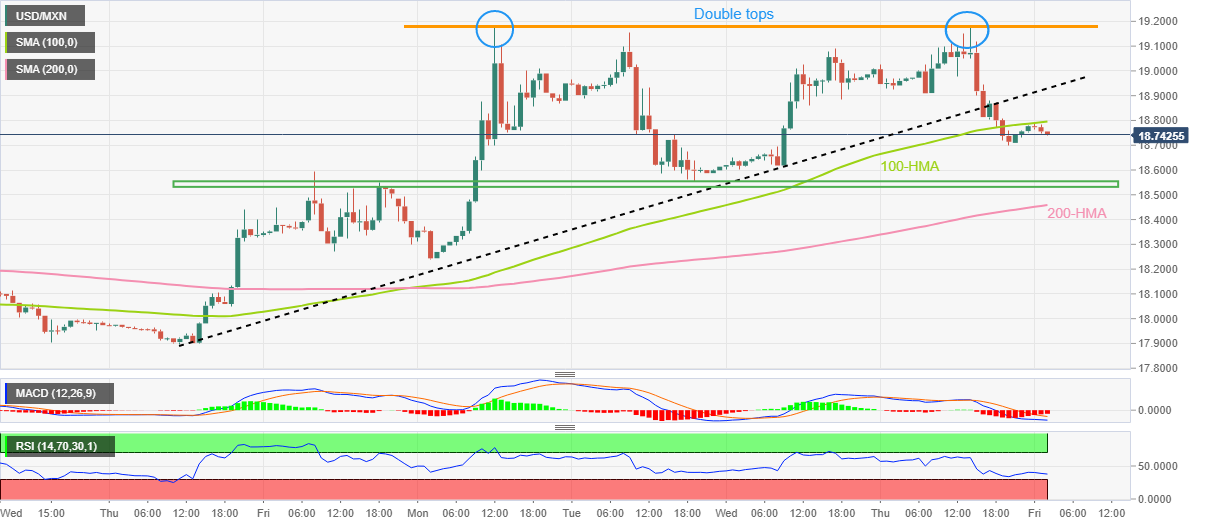USD/MXN Price Analysis: Retreats towards 18.55 support to confirm double top bearish chart pattern
- USD/MXN reverses from 100-HMA hurdle to pare intraday gains.
- Bearish chart formation needs confirmation from 18.55, downbeat oscillators keep sellers hopeful.
- 200-HMA acts as additional downside filter, bulls need validation from February’s top to tighten the grips.
USD/MXN bears remain hopeful as the Mexican Peso (MXN) pair take a U-turn from the 100-Hour Moving Average (HMA) to pare intraday gains around 18.75 during early Friday.
Not only the failure to cross the 100-HMA but bearish MACD signals and downbeat RSI (14), not oversold, also favor the USD/MXN sellers.
Above all, the pair’s “double top” bearish chart pattern, by reversing twice from the 19.20 hurdle, keeps the USD/MXN sellers hopeful.
However, a clear downside break of the stated pattern’s lower end, around 18.55, becomes necessary for the bears to retake control.
Following that, the 200-HMA level of 18.45 may act as a buffer during the theoretical fall targeting the monthly low surrounding 17.90, also the lowest level since 2017.
Meanwhile, recovery moves, need to cross the 100-HMA hurdle of 18.80 to convince intraday buyers.
Even so, the previous support line from March 09, close to 18.93 at the latest, could challenge the USD/MXN pair’s run-up towards the double tops marked around 19.20.
In a case where USD/MXN crosses the 19.20 hurdle, February’s peak of 19.29 and the 20.00 psychological manget appear as the key upside levels to watch for buyers.
USD/MXN: Hourly chart

Trend: Further downside expected
